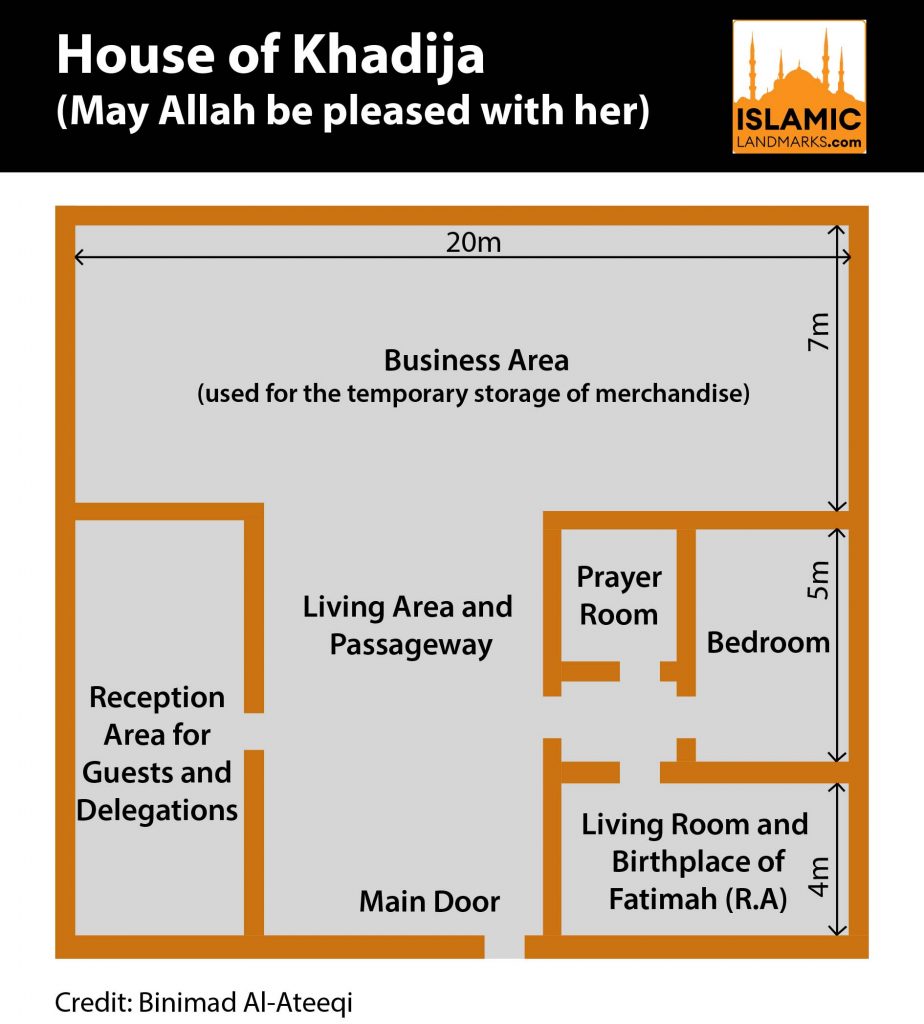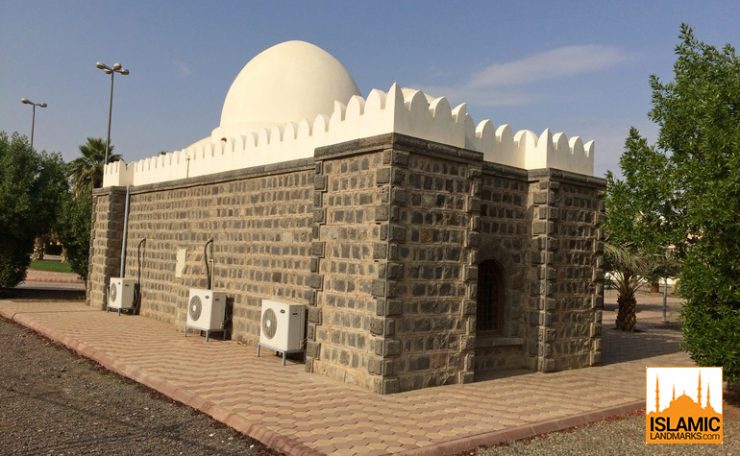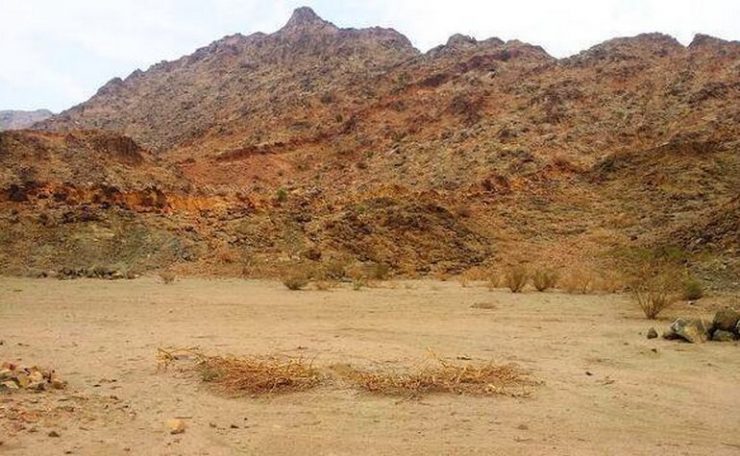
The house of Khadija (رضي الله عنها), Makkah.
This is the approximate region, outside the Marwah exit, under which the house of Ummul Mu’mineen Khadija (رضي الله عنها) was located.
The Prophet (ﷺ) lived here from the time of his marriage to her until he emigrated to Madinah.
This is the approximate region, outside the Marwah exit, under which the house of Ummul Mu’mineen Khadija (رضي الله عنها) was located.
The Prophet (ﷺ) lived here from the time of his marriage to her until he emigrated to Madinah.

When the Prophet (ﷺ) married Khadija (رضي الله عنها), he moved out from the house of his uncle Abu Talib and into the house of his bride.
At the time of their marriage he (ﷺ) was 25 and Khadija (رضي الله عنها) was 40 years old. They stayed together for 25 years.
At the time of their marriage he (ﷺ) was 25 and Khadija (رضي الله عنها) was 40 years old. They stayed together for 25 years.

Khadija (رضي الله عنها) bore all his children except for Ebrahim, who was born to Mariya Qibtiya.
All of their children were born at her home. They were named Qasim, Zaynab, Ruqayyah, Umm Kulthoom, Fatima and Abdullah.
This image shows the approximate location of the home.
All of their children were born at her home. They were named Qasim, Zaynab, Ruqayyah, Umm Kulthoom, Fatima and Abdullah.
This image shows the approximate location of the home.

The layout of the House of Khadija (رضي الله عنها).
The house saw the beginnings of the message carried by the Prophet (ﷺ) who stayed here for 28-29 years. Jibraeel (عليه السلام) brought down the revelations of the Quran here on several occasions.
(Credit: @BinImad)
The house saw the beginnings of the message carried by the Prophet (ﷺ) who stayed here for 28-29 years. Jibraeel (عليه السلام) brought down the revelations of the Quran here on several occasions.
(Credit: @BinImad)

By 1950, the house did not exist any more.
However, Shaykh Abbas Yusuf Qattan, the Mayor of Makkah at the time preserved the site by concealing the home under layers of sand and building a school for the memorisation of the Quran on top.
This was named the Sayyid Abbas School.
However, Shaykh Abbas Yusuf Qattan, the Mayor of Makkah at the time preserved the site by concealing the home under layers of sand and building a school for the memorisation of the Quran on top.
This was named the Sayyid Abbas School.

In 1989, a project was started to expand the area outside the Mas’aa to accommodate the increasing number of pilgrims to the Masjid al-Haram.
This involved clearing the area where the school stood over the original house of Khadija (رضي الله عنها).
Photos from the excavation..

This involved clearing the area where the school stood over the original house of Khadija (رضي الله عنها).
Photos from the excavation..


An archaeological excavation was carried out to document the house.
Then the entire site was covered with a special soft sand, which was free from any salinity/impurities.
Today, the spot is part of the prayer area near the exit of Mount Marwah (see photo at start of thread).

Then the entire site was covered with a special soft sand, which was free from any salinity/impurities.
Today, the spot is part of the prayer area near the exit of Mount Marwah (see photo at start of thread).


• • •
Missing some Tweet in this thread? You can try to
force a refresh

























